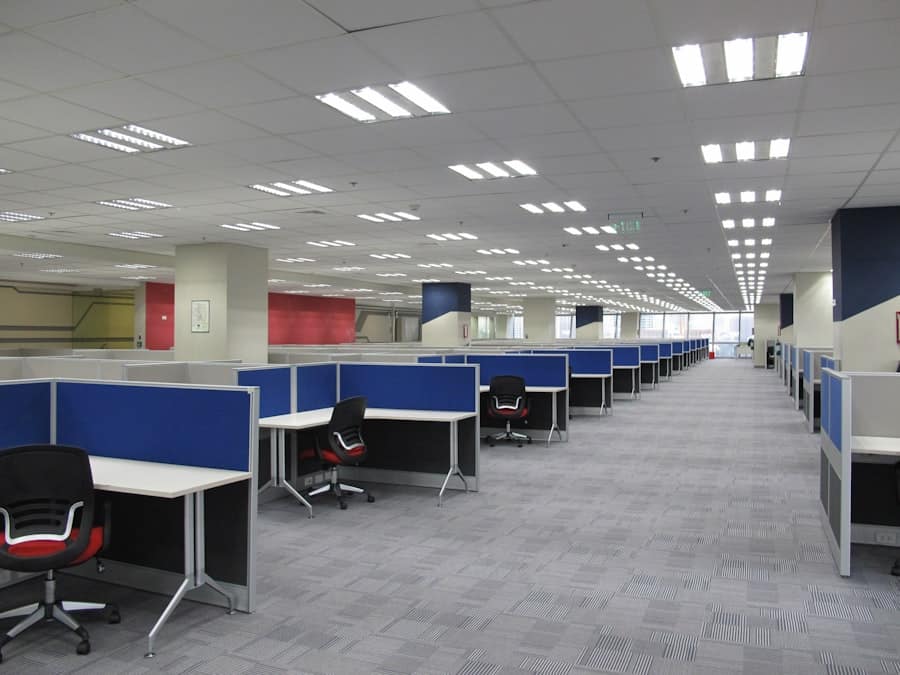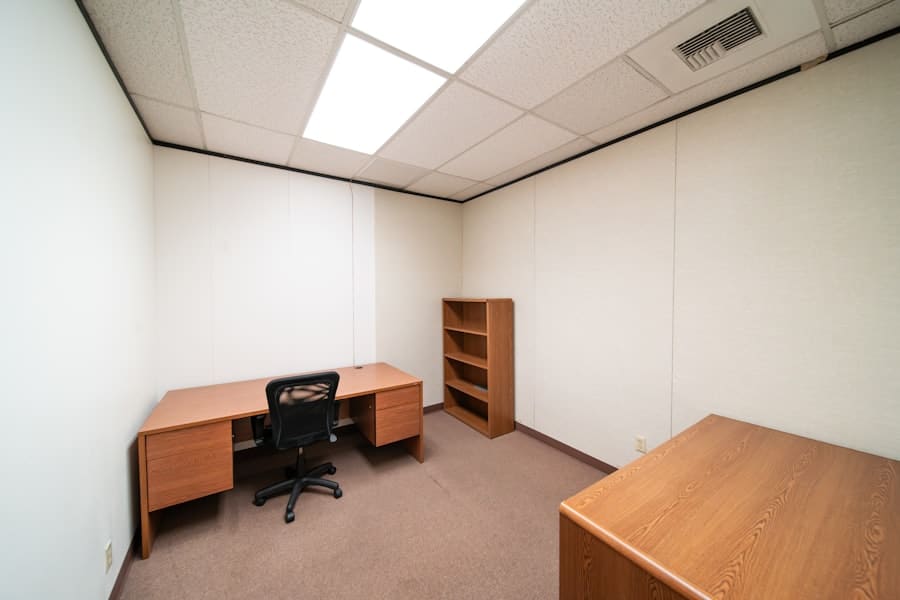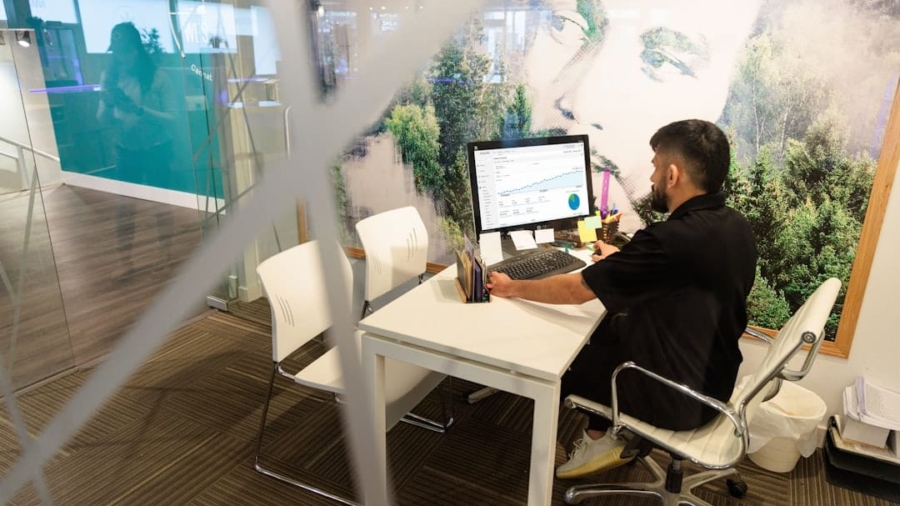In the rapidly evolving landscape of modern business, the concept of a virtual office has emerged as a transformative solution for companies seeking to adapt to the demands of a globalized economy. A virtual office provides businesses with a professional presence without the need for a physical workspace. This innovative approach allows organizations to operate remotely while maintaining essential services such as a business address, phone answering, and meeting room access.
The appeal of virtual offices lies not only in their ability to reduce overhead costs but also in their capacity to enhance operational flexibility. As businesses navigate the complexities of a competitive market, the traditional model of fixed office spaces is being re-evaluated.
Virtual offices offer a unique blend of professionalism and adaptability, enabling companies to scale their operations without the constraints of physical infrastructure. This shift is particularly relevant in an era where remote work has become mainstream, driven by technological advancements and changing employee expectations.
Key Takeaways
- Virtual offices offer businesses a flexible workspace without physical office constraints.
- They provide significant cost savings and improve operational efficiency.
- Enhanced work-life balance is achieved through flexible working arrangements.
- Advanced technology and communication tools are essential for virtual office success.
- Addressing security, data protection, and overcoming challenges is critical for sustainable virtual office models.
Benefits of Virtual Offices
One of the most significant advantages of virtual offices is the ability to create a professional image without the associated costs of maintaining a physical location. Businesses can establish a prestigious address in a prime location, which can enhance credibility and attract clients. This is particularly beneficial for startups and small businesses that may not have the resources to invest in a traditional office space.
By utilizing a virtual office, companies can project an image of stability and professionalism, which can be crucial in building trust with potential customers and partners. Moreover, virtual offices facilitate access to a global talent pool. With remote work becoming increasingly accepted, businesses are no longer limited by geographical constraints when it comes to hiring employees.
This opens up opportunities to recruit top talent from diverse backgrounds and locations, fostering innovation and creativity within teams. The flexibility offered by virtual offices allows companies to assemble skilled professionals who may not be willing or able to relocate, thus enhancing their competitive edge in the market.
Cost Savings and Efficiency

The financial implications of adopting a virtual office model are profound. Traditional office spaces come with significant overhead costs, including rent, utilities, maintenance, and furnishings. In contrast, virtual offices eliminate many of these expenses, allowing businesses to allocate their resources more efficiently.
For instance, companies can invest in technology, marketing, or employee development rather than being burdened by fixed costs associated with physical premises. This financial flexibility can be particularly advantageous for startups and small businesses that operate on tight budgets. In addition to direct cost savings, virtual offices can lead to increased operational efficiency.
With the right tools and systems in place, businesses can streamline their processes and improve productivity. For example, many virtual office providers offer integrated services such as mail handling, call forwarding, and access to meeting rooms on an as-needed basis. This means that employees can focus on their core responsibilities without being distracted by administrative tasks.
Furthermore, the ability to work remotely can lead to reduced commuting time, allowing employees to dedicate more hours to their work or personal pursuits.
Flexibility and Work-Life Balance
Flexibility is one of the hallmark features of virtual offices, allowing employees to tailor their work environments to suit their individual needs. This adaptability can significantly enhance job satisfaction and overall well-being. Employees can choose where they work—whether from home, a co-working space, or even while traveling—enabling them to create an environment that fosters productivity and creativity.
This level of autonomy can lead to higher engagement levels and lower turnover rates, as employees feel more empowered in their roles. Moreover, the flexibility afforded by virtual offices contributes positively to work-life balance. In traditional office settings, rigid schedules often lead to burnout and stress as employees struggle to juggle personal commitments with professional responsibilities.
Virtual offices allow for more fluid working hours, enabling individuals to manage their time more effectively. For instance, parents can adjust their work schedules around school drop-offs and pick-ups, while others may choose to work during hours when they feel most productive. This balance not only enhances employee satisfaction but also promotes a healthier workplace culture.
Technology and Communication
| Metric | Traditional Workspaces | Virtual Offices | Impact/Benefit |
|---|---|---|---|
| Average Monthly Cost per Employee | 1200 | 300 | 75% Cost Reduction |
| Commute Time (hours per week) | 5 | 0 | 100% Time Saved |
| Office Space Required (sq. ft. per employee) | 150 | 0 | Eliminates Physical Space Needs |
| Employee Productivity Increase | Baseline | 15% | Improved Focus & Flexibility |
| Employee Satisfaction Rate | 70% | 85% | Higher Work-Life Balance |
| Environmental Impact (CO2 Emissions per employee per year) | 4.5 tons | 1.2 tons | 73% Reduction |
| IT Infrastructure Cost | High (on-premise servers, maintenance) | Moderate (cloud-based solutions) | Lower Maintenance & Scalability |
| Collaboration Efficiency | High (in-person) | Moderate to High (digital tools) | Depends on Tools & Culture |
The success of virtual offices hinges on the effective use of technology and communication tools. A robust technological infrastructure is essential for facilitating collaboration among remote teams. Cloud-based platforms such as Google Workspace or Microsoft 365 enable employees to share documents in real-time, ensuring that everyone is on the same page regardless of their physical location.
Video conferencing tools like Zoom or Microsoft Teams have become staples for virtual meetings, allowing teams to connect face-to-face even when miles apart. In addition to collaboration tools, project management software such as Trello or Asana helps teams stay organized and accountable. These platforms allow for task assignment, progress tracking, and deadline management, ensuring that projects move forward smoothly despite the absence of a centralized office space.
Effective communication is further enhanced through instant messaging applications like Slack or Discord, which facilitate quick exchanges of information and foster a sense of community among remote workers.
Challenges and Solutions

Despite the numerous benefits associated with virtual offices, there are inherent challenges that organizations must navigate.
The lack of face-to-face interaction can lead to feelings of disconnection and loneliness, which may impact morale and productivity.
To combat this challenge, companies can implement regular check-ins and team-building activities that promote social interaction among employees. Virtual happy hours or online team games can help foster camaraderie and strengthen relationships within remote teams. Another challenge is maintaining effective communication across different time zones.
As businesses expand globally, coordinating meetings and collaboration can become increasingly complex. To address this issue, organizations should establish clear communication protocols that account for varying time zones. Utilizing asynchronous communication methods—such as recorded video messages or detailed project updates—can ensure that all team members remain informed and engaged without requiring everyone to be online simultaneously.
Security and Data Protection
As businesses transition to virtual office models, security and data protection become paramount concerns. Remote work environments often expose organizations to various cybersecurity threats, including data breaches and phishing attacks. To mitigate these risks, companies must implement robust security measures such as encryption protocols, secure access controls, and regular security audits.
Additionally, providing employees with training on cybersecurity best practices can empower them to recognize potential threats and respond appropriately. Furthermore, compliance with data protection regulations is critical for businesses operating in multiple jurisdictions. Organizations must ensure that they adhere to laws such as the General Data Protection Regulation (GDPR) in Europe or the California Consumer Privacy Act (CCPA) in the United States.
This may involve implementing data management policies that govern how personal information is collected, stored, and shared within a virtual office environment.
Future of Virtual Offices
The future of virtual offices appears promising as businesses continue to embrace remote work as a viable long-term strategy. The COVID-19 pandemic accelerated this trend, demonstrating that many organizations could operate effectively without traditional office spaces. As companies recognize the benefits of flexibility and cost savings associated with virtual offices, it is likely that this model will become increasingly mainstream.
Looking ahead, advancements in technology will further enhance the capabilities of virtual offices. Innovations such as artificial intelligence (AI) and machine learning could streamline administrative tasks and improve decision-making processes within remote teams. Additionally, the rise of augmented reality (AR) and virtual reality (VR) may revolutionize how teams collaborate by creating immersive environments for meetings and brainstorming sessions.
As businesses continue to adapt to changing workforce dynamics and employee preferences, the virtual office model will likely evolve into a hybrid approach that combines remote work with occasional in-person collaboration. This flexibility will allow organizations to harness the benefits of both worlds while fostering a culture of inclusivity and innovation in an increasingly digital age.
As the concept of virtual offices continues to gain traction, it’s interesting to explore how this shift impacts various industries, including media and design. For instance, the article on the best software for newspaper design highlights the tools that can enhance remote collaboration and streamline workflows in a virtual environment. You can read more about it in this related article. This connection underscores the broader implications of virtual workspaces on creative industries and the importance of adapting to new technologies.
FAQs
What is a virtual office?
A virtual office is a service that enables employees and business owners to work remotely by providing a range of business functions accessible through the internet. It typically includes a professional business address, mail handling, phone answering services, and access to meeting rooms or coworking spaces when needed.
How do virtual offices differ from traditional workspaces?
Traditional workspaces are physical office locations where employees work on-site. Virtual offices, on the other hand, allow employees to work from anywhere while maintaining a professional business presence. Virtual offices reduce the need for physical office space and associated costs.
What are the benefits of using a virtual office?
Benefits include cost savings on rent and utilities, increased flexibility for employees, access to a professional business address, reduced commuting time, and the ability to scale operations quickly. Virtual offices also support remote work and can improve work-life balance.
Can virtual offices support all types of businesses?
Virtual offices are suitable for many types of businesses, especially those that do not require a physical storefront or constant on-site presence, such as startups, freelancers, consultants, and remote teams. However, businesses that rely heavily on physical equipment or face-to-face customer interactions may find traditional offices more practical.
How do virtual offices handle communication and collaboration?
Virtual offices utilize digital tools such as video conferencing, instant messaging, cloud storage, and project management software to facilitate communication and collaboration among remote team members.
Are virtual offices secure?
Security depends on the technology and protocols used. Many virtual office providers implement secure networks, encrypted communications, and data protection measures to ensure confidentiality and safety of business information.
Do virtual offices provide physical meeting spaces?
Many virtual office providers offer access to physical meeting rooms or coworking spaces on a pay-per-use basis, allowing businesses to hold in-person meetings when necessary.
How do virtual offices impact employee productivity?
Virtual offices can increase productivity by reducing commute times and allowing employees to work in environments where they feel most comfortable. However, productivity depends on effective communication, self-discipline, and management practices.
What are the costs associated with virtual offices?
Costs vary depending on the services chosen but generally include fees for a business address, mail handling, phone services, and optional access to meeting rooms. These costs are often lower than leasing traditional office space.
Can virtual offices replace traditional offices entirely?
While virtual offices can replace many functions of traditional offices, some businesses may still require physical spaces for certain activities. Hybrid models combining virtual and physical workspaces are also common.

